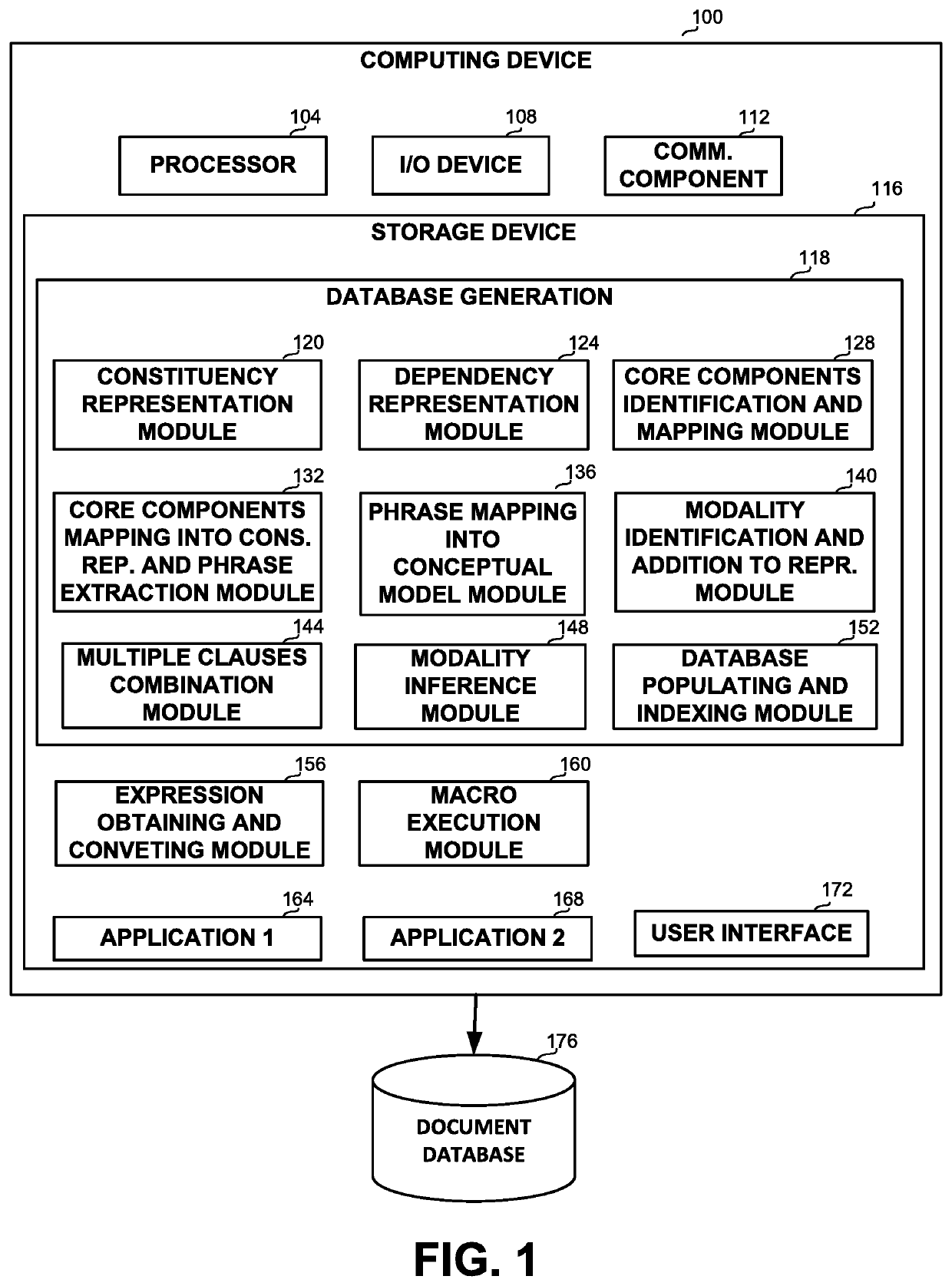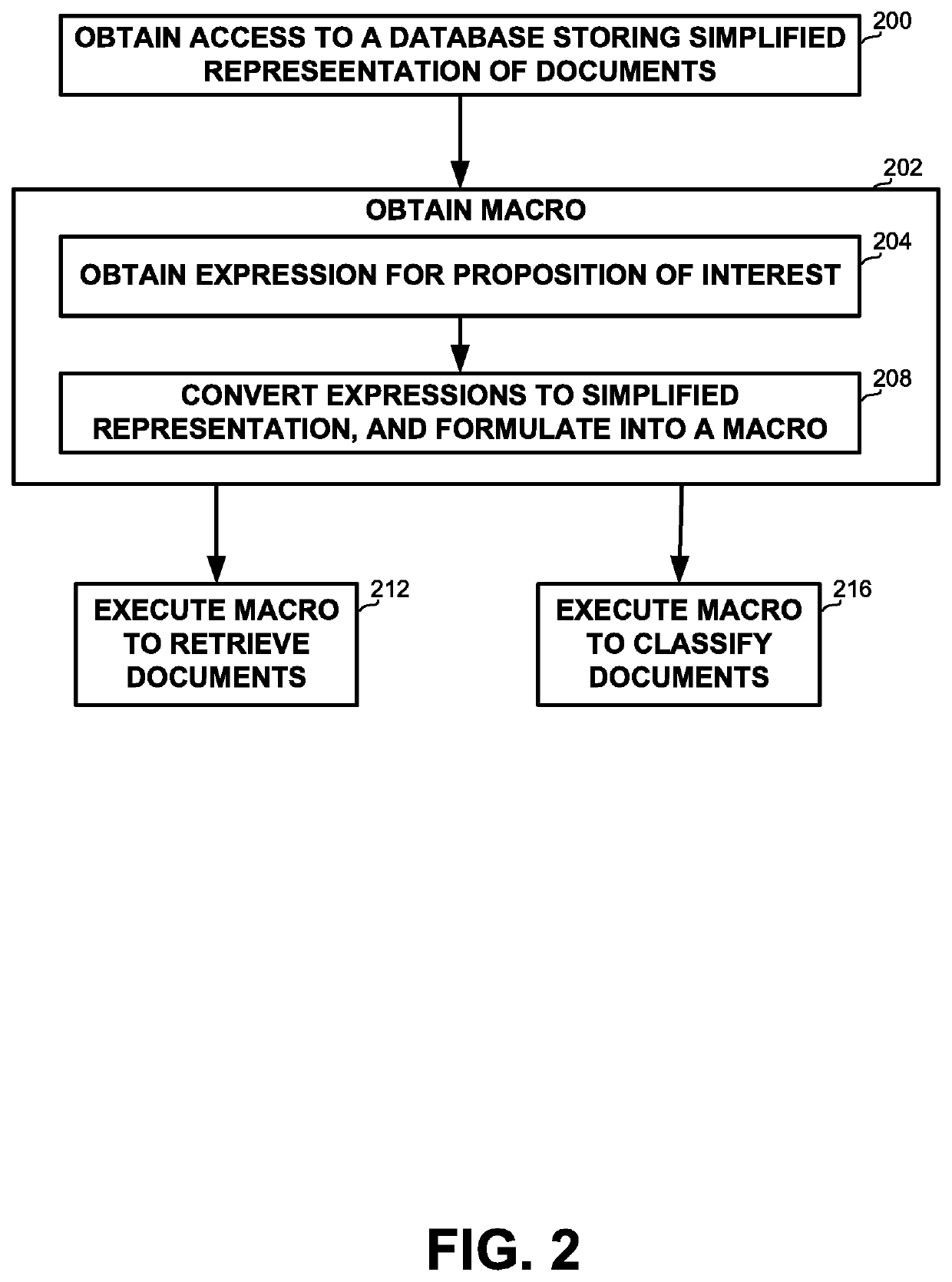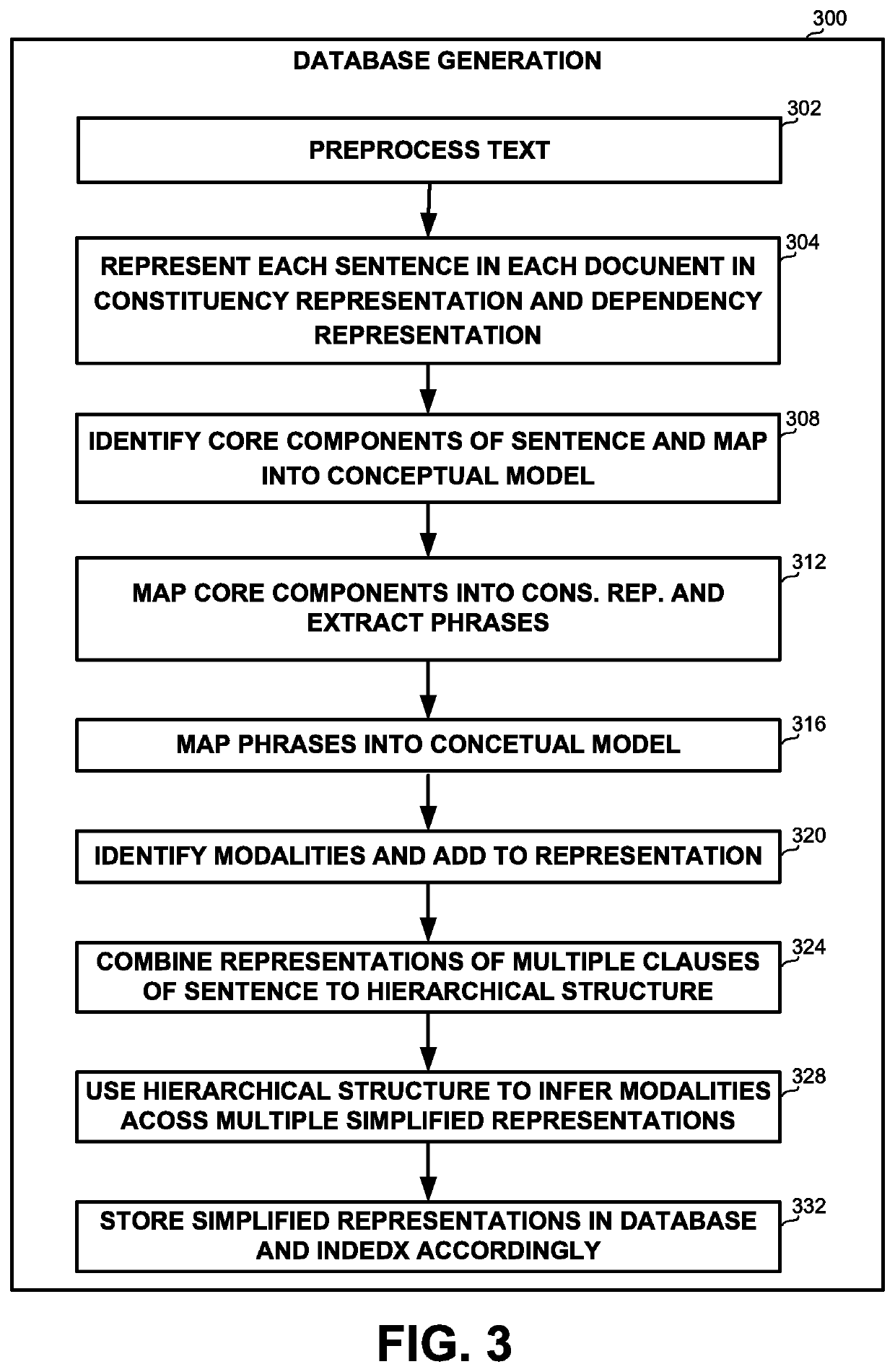Proposition identification in natural language and usage thereof
a natural language and phrase technology, applied in the field of text analysis, can solve the problem that it is practically impossible to cover all the options for retrieving the required documents, and achieve the effect of simplifying the representation of phrases
- Summary
- Abstract
- Description
- Claims
- Application Information
AI Technical Summary
Benefits of technology
Problems solved by technology
Method used
Image
Examples
Embodiment Construction
[0013]One technical problem dealt with by the disclosed subject matter is the need to determine semantic equivalence, in order to determine whether a document comprises a required proposition. Such determination can be used by various applications, such as classification, document retrieval, or others.
[0014]One known technique for determining semantic equivalence comprises transforming a natural language utterance into a canonical form, which may be referred to as the proposition. The canonical form may be viewed as a representation of the intension of an utterance. Propositions can then serve as the uniform substrate on which applications such as retrieval or classification could be performed. In the example above, the proposition “the price of X is inadequate” expresses the intention of, and can replace each of the statements “X is expensive”, “X is not cheap”, “X is not worth its price”, “X is overpriced”, “there are cheaper alternatives to X”. This proposition can then allow a c...
PUM
 Login to View More
Login to View More Abstract
Description
Claims
Application Information
 Login to View More
Login to View More - R&D
- Intellectual Property
- Life Sciences
- Materials
- Tech Scout
- Unparalleled Data Quality
- Higher Quality Content
- 60% Fewer Hallucinations
Browse by: Latest US Patents, China's latest patents, Technical Efficacy Thesaurus, Application Domain, Technology Topic, Popular Technical Reports.
© 2025 PatSnap. All rights reserved.Legal|Privacy policy|Modern Slavery Act Transparency Statement|Sitemap|About US| Contact US: help@patsnap.com



